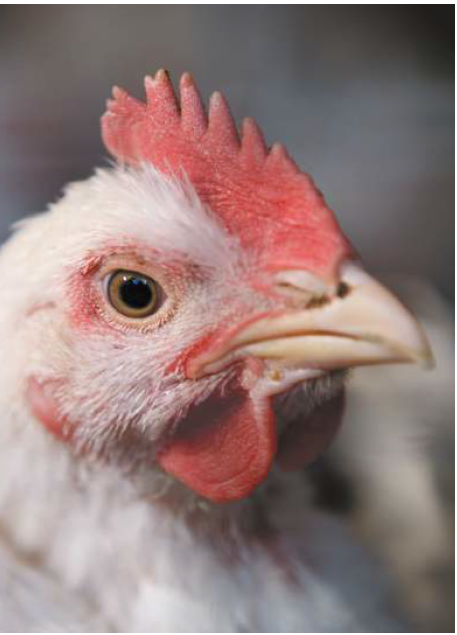By T.J. Gaydos
There is no more efficient place to invest than in pullets. Pullets are the future of an integrated company. Successful pullet rearing is simply attention to detail, management, serology, biosecurity, vaccination, and worming. Decisions, both good and bad, made during rearing will follow that company for a year. This is especially true related to the introduction of pathogens such as mycoplasmas, Salmonella, and reoviruses, which are persistent and can be vertically transmitted. The importance of biosecurity in any pullet program cannot be overstated, but it is even more critical in an antibiotic-free (ABF) program.
The 4 pillars of rearing pullets without antibiotics
1. Effective management
It is imperative to properly manage flock uniformity, weight, and frame size. For details on how to manage and feed pullets, it is always advised to use the technical support of the primary breeder company because no one knows their bird better than them. Pullet uniformity is critical to the success of the flock in the breeder house. Uniform and healthy pullets are easier to manage to peak and easier to feed for persistency of lay.
Uniform and consistent feed distribution is crucial to managing pullets: people must monitor feeding on a regular and consistent basis. Simply because the feed disappears before the next feeding does not mean it was distributed in an effective way to all birds. Non-uniform feed distribution is not only bad for uniformity but may train other undesirable behaviors such as race tracking, foraging, and roosting on lines to feed. These behaviors increase the risk for trauma and picking up pathogens in the litter.

There are multiple stressful transition periods in the life of a pullet. It is advised to spread the stressors apart as much as possible. Do not make major management changes, such as turning birds out, changing their lighting or feed program, all at the same time. The more gradual the transitions are, the easier it will be on the birds, and the more likely they will perform as desired.
2. Heightened biosecurity
It is recommended to have dedicated inside and outside boots for all growers, service technicians, and regular visitors. A divided entrance (i.e., Danish entry) is ideal to further limit the risk of bringing pathogens in from the outside. Rodent and insect control is another important facet of pullet biosecurity and must be closely monitored. Vehicles entering the farm must be consistently cleaned and disinfected.
Managing the risk of pathogen introduction via feed is important and feed hygiene should not be ignored. Visitors are almost always the cause of biosecurity breaks and pullets receive a lot of visitors including vaccination crews that travel between farms with equipment. Ensure that vaccination equipment is properly sanitized between farms and crews always use appropriate personal protective equipment.
3. Focus on intestinal health
One of the most difficult challenges to raising pullets is conferring early and uniform immunity to coccidia. These parasites can be managed successfully with chemicals, ionophores, or vaccine programs, although every program has pros and cons. A fundamental problem with an ionophore program is accidentally feeding ionophores (technically considered antibiotics) to ABF flocks due to logistic errors at the feed mill.
Chemical programs can be very effective at managing Eimeria spp. cycling. Most of the time they work a little too well and birds do not develop adequate immunity; consequently, putting flocks at risk of breaking with Eimeria necatrix after chemicals are removed from the diets. A coccidiosis vaccine program is the most sustainable for rearing pullets.
The relative low density of birds, compared to broilers, and the lower feed consumption and thus lower consumption of water can result in dry litter early. The reduced density can also make it difficult for birds to pick up oocysts early in the coccidiosis cycle. Several techniques may be used to increase the chance of success. Birds can be spray-vaccinated at the hatchery and again when placed in the house. Brooding the birds in a portion (e.g., ¼) of the house for the first 7 to 8 days before turning them out to half house, and then to full house can improve early cycling.

Carefully using built-up litter may improve exposure to beneficial microflora; thereby, improving gut health. Managing intestinal health with the correct non-antibiotic feed additives such as saponins, essential oils, and pre and probiotics can significantly improve pullet health.
A well-designed deworming program is important for bird health and uniformity. It is also essential to help reduce the risk of Blackhead disease, which is caused by Histomonas meleagridis, while its intermediate host is Heterakis gallinarum (cecal worms).
4. Tailored vaccination program
Building a vaccination program for pullets has two critical functions: protect the health of the pullets/breeders and protect the health of the offspring by conferring maternal immunity. The exact constituents of the program depend heavily on regional disease challenges. Matching the program to disease pressure is best accomplished with a combination of a rigorous serology program for hens as well as periodically checking the blood of processing-age broilers.
Serology combined with open communication between the breeder and broiler departments about disease challenges can greatly improve the antigen choices of the vaccination program. Pullet rearing is attention to detail – managing the small details will help the long-term success of the poultry company.















